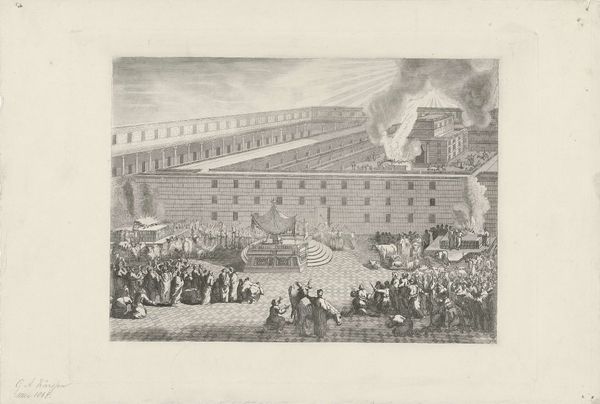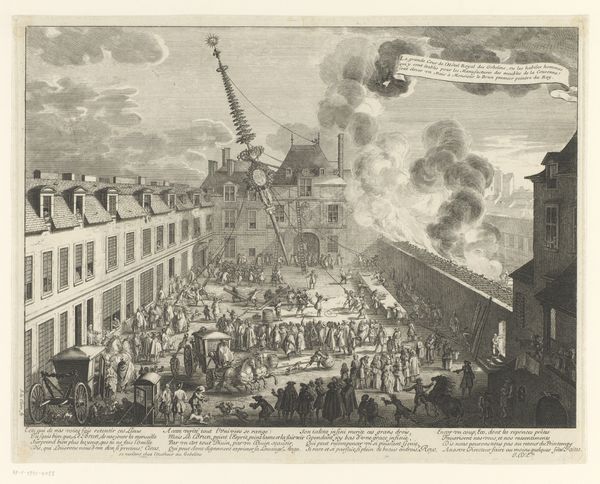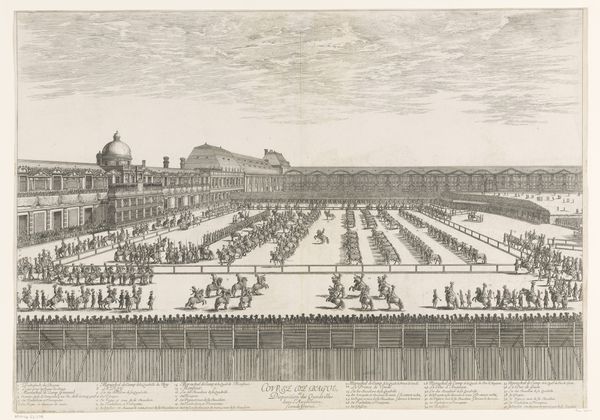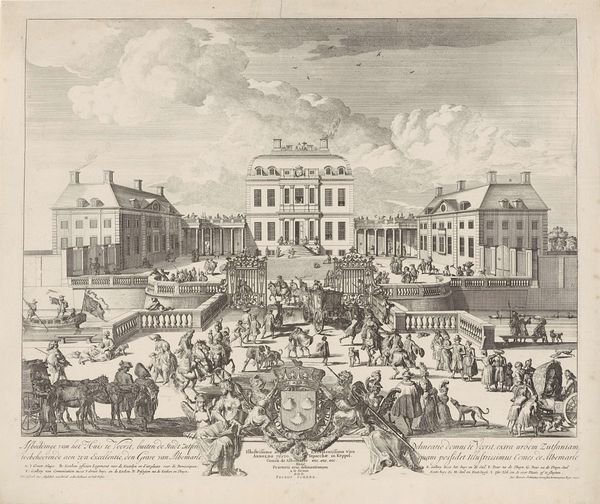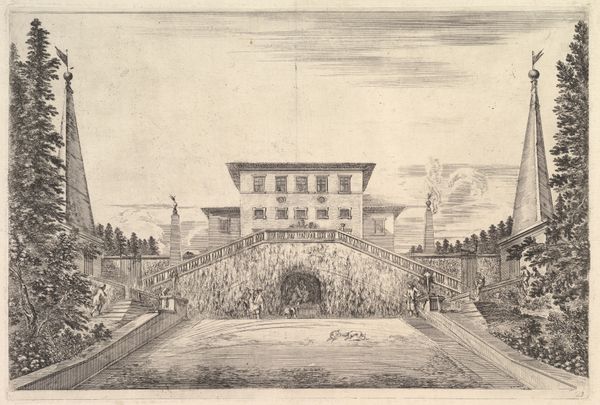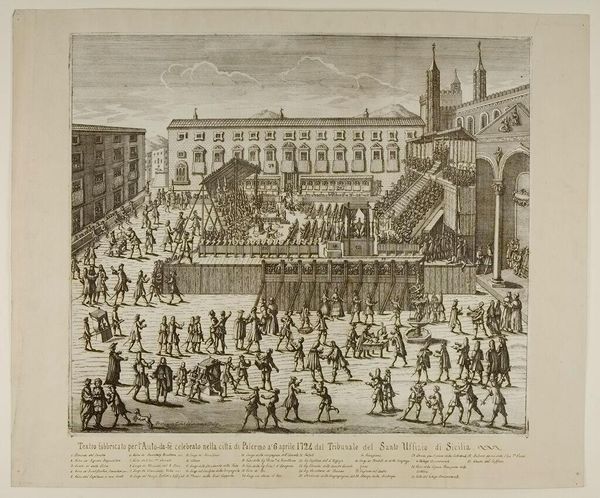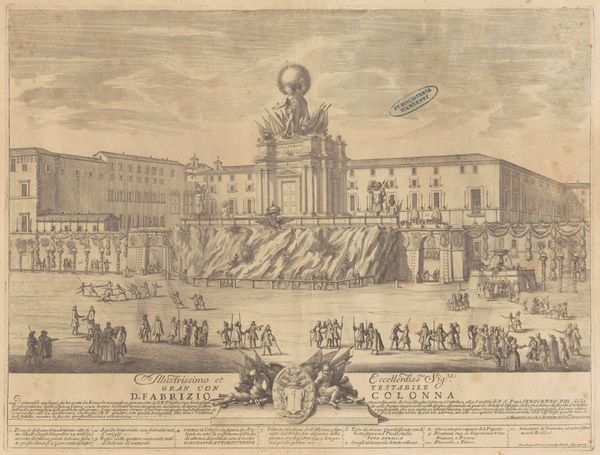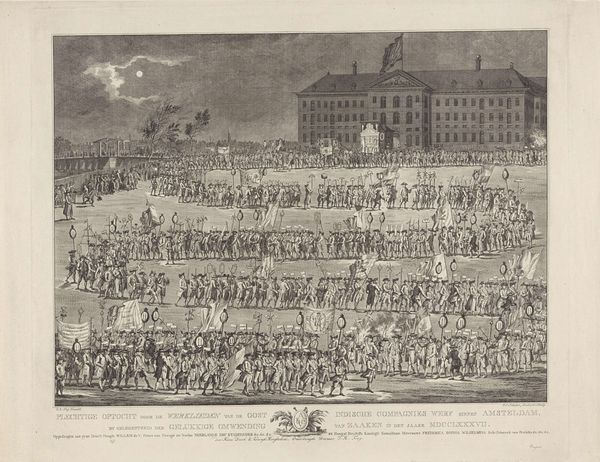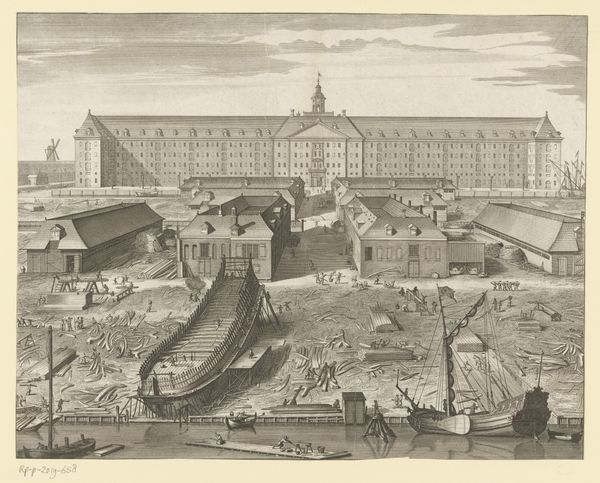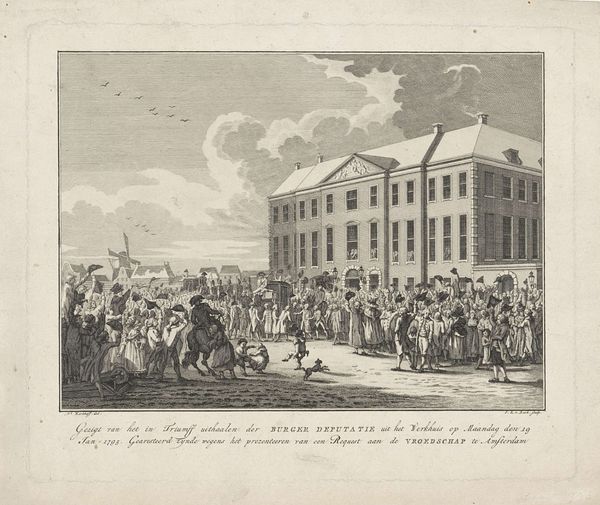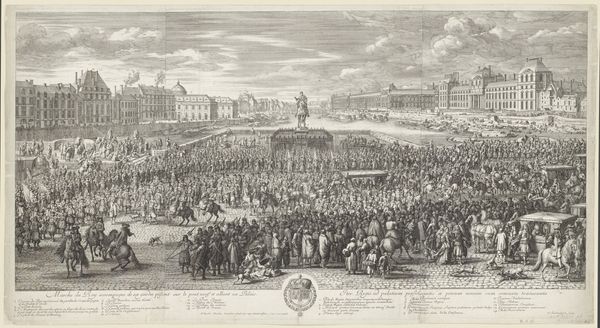
print, engraving
#
baroque
# print
#
old engraving style
#
form
#
line
#
cityscape
#
history-painting
#
engraving
Dimensions: height 320 mm, width 444 mm
Copyright: Rijks Museum: Open Domain
Curator: Here we have François van Bleyswijck’s engraving, “Inwijding van de Tempel van Salomo,” or "Dedication of the Temple of Solomon," created in 1727. It’s currently held at the Rijksmuseum. Editor: My first impression is dominated by the line work; it is incredibly detailed. Look at how the crosshatching defines the architecture and creates volume on the figures! There's almost a sense of precision that verges on the obsessive. Curator: Absolutely. Considering the historical context, Bleyswijck's portrayal transcends mere architectural documentation; it's steeped in political and religious implications. We see not just a temple, but the symbol of a covenant and nation-building exercise. Editor: Focusing on the composition, notice how the artist employs a structured architectural perspective, giving way to what appears to be dynamic and emotive scenes of people seemingly bearing witness to some dramatic act. Curator: It's fascinating how this composition subtly reinforces social hierarchies, isn't it? Solomon, enthroned and elevated, embodies patriarchal authority while the masses enact sacrifice, simultaneously displaying piety and allegiance. The engraver even includes different social classes represented by how far away people are positioned in relation to Solomon and the building. Editor: Yet within the architectural precision, I am curious about the use of fire and smoke which adds depth, disrupting an otherwise systematic scene. Curator: Indeed. I’d also venture to interpret that rising smoke not as purely textural or atmospheric but linked to broader themes of divine presence and sacrality that run deep through artistic depictions of political, ethnic, or religious consecrations of power. Editor: Interesting. Considering that the focal point directs attention to details regarding sacrifice, what message is being projected onto viewers regarding self sacrifice, whether social, familial, or economic? Curator: Exactly. Perhaps Van Bleyswijck hoped to invite deeper reflection on contemporary notions of state, sovereignty, and religious life through the prism of history. Editor: Well, reflecting on my side, examining its visual intricacies has opened my mind to new interpretive dimensions I might have overlooked! Curator: Indeed, for me too. By positioning the engraving within its historical context, we are challenged to address not just visual form but also ideological functions behind works such as these.
Comments
No comments
Be the first to comment and join the conversation on the ultimate creative platform.
